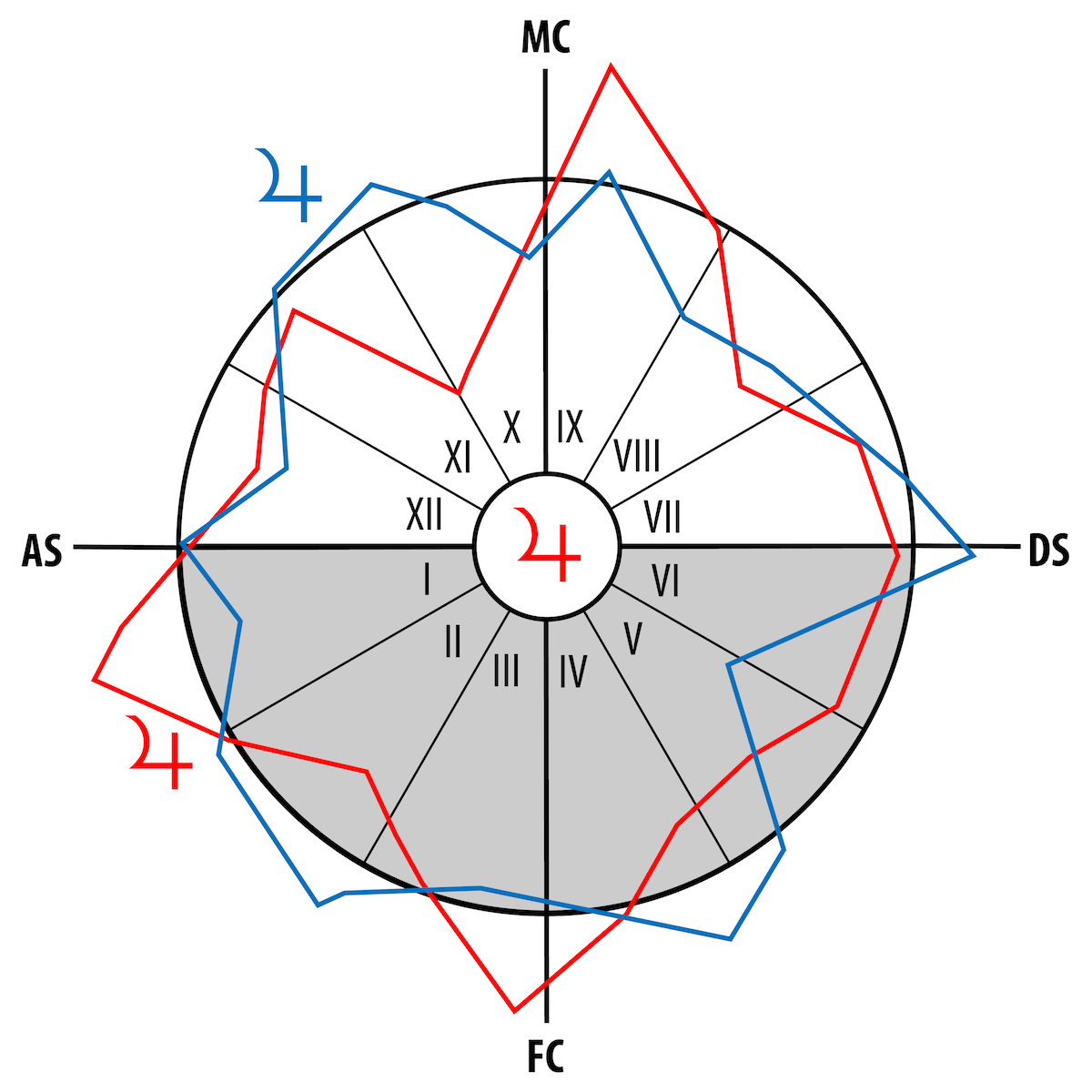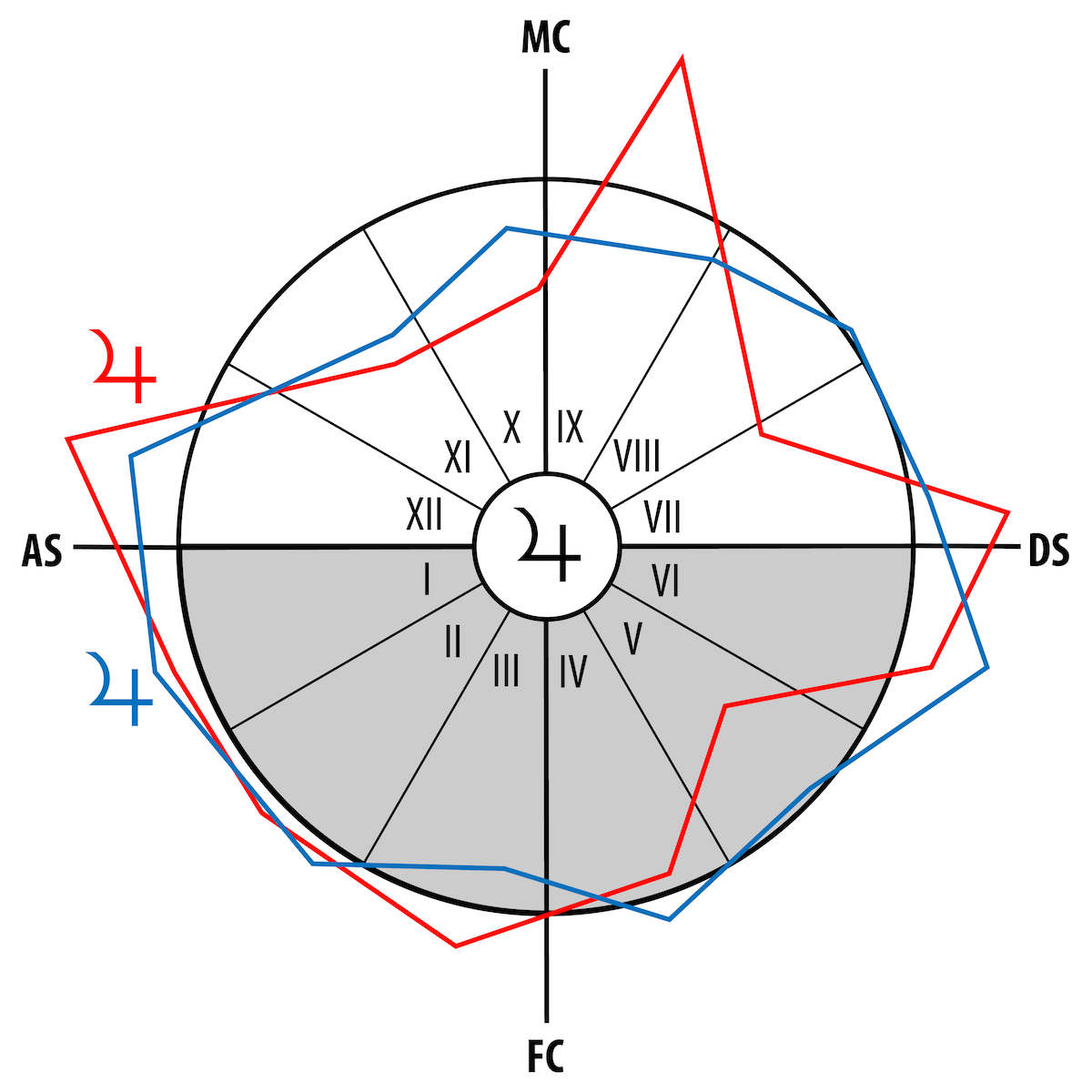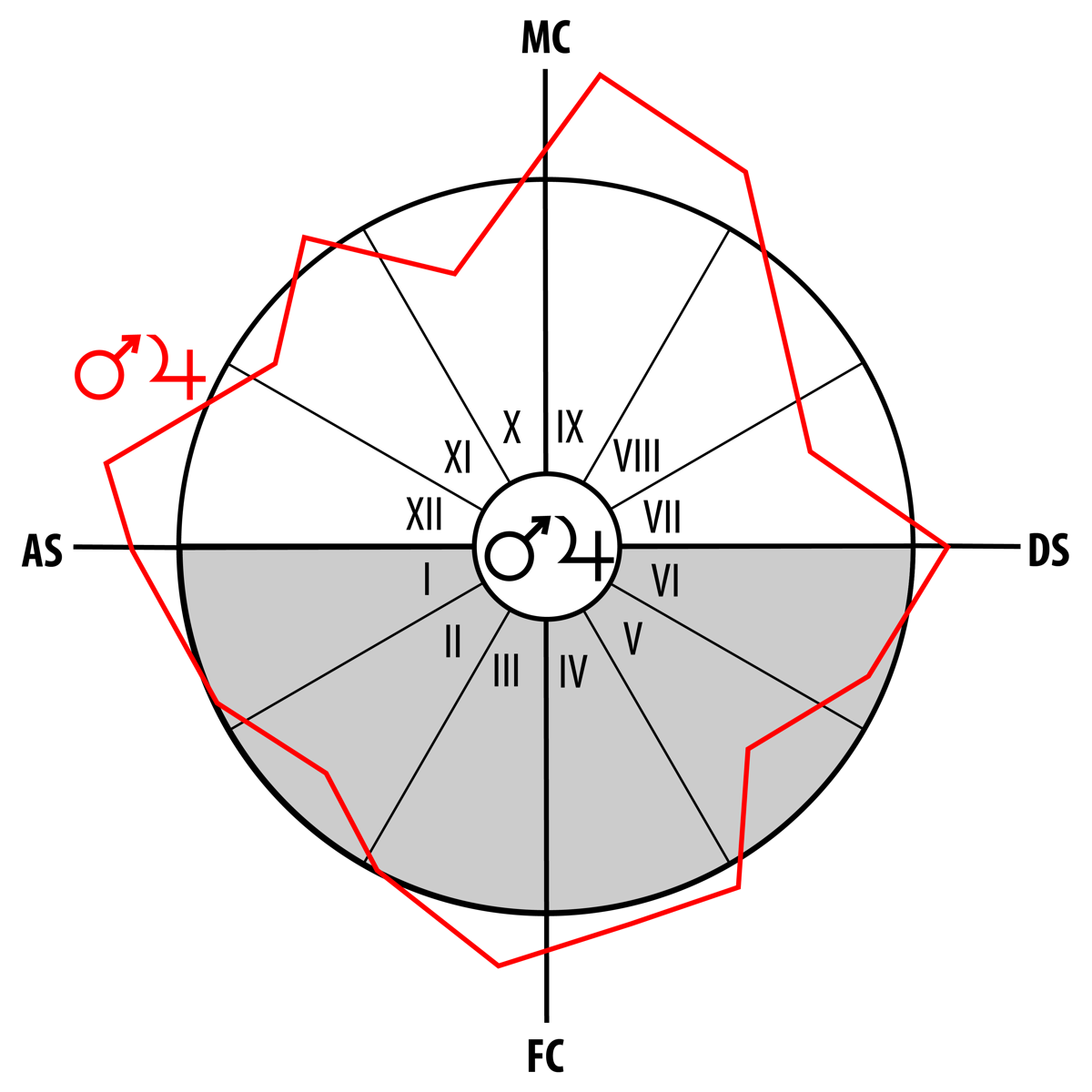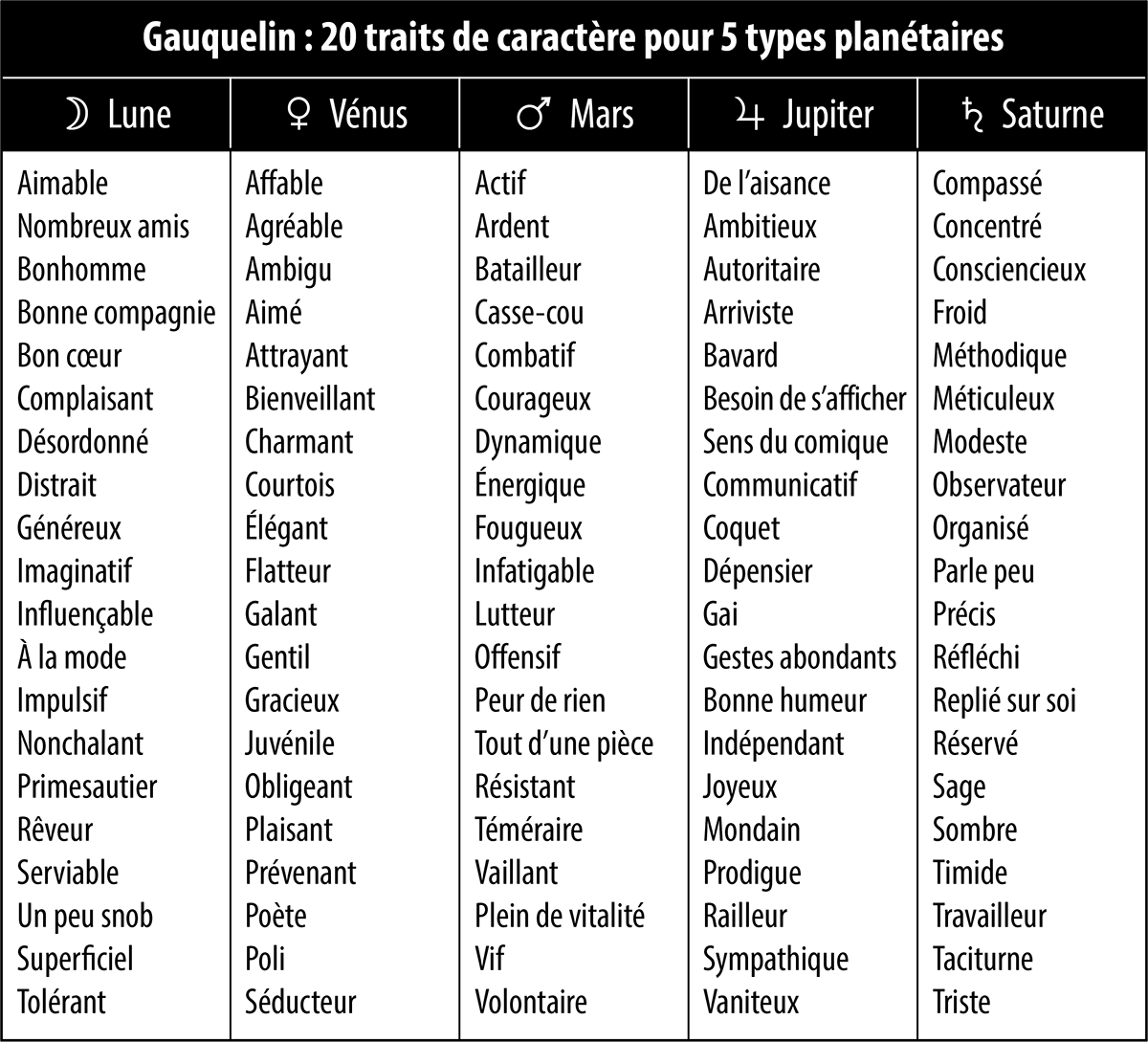Your Planets
Portraits of the Planets
Aspects between Planets
The planetary ages
The planetary families
Planets in Signs
The Planets in comics


Systematic astro-statistics essentially refers to the work of Michel and Françoise Gauquelin, who were the first to put the claims of traditional astrology to the test of statistical methods applied to the Birth Charts of tens of thousands of people. (R. P.).
Statistical techniques devoted to the control of astrological precepts. Statistics, made by pro- or anti-astrologers, are devoted to the verification of traditional or modern assertions. The material is vast, unlimited, and the tool is not always up to the problem. If, in addition, the user is a novice or ill-intentioned – a little a priori is enough – the results are immediately felt.
For example, side “pro”: about twenty charts of artists to control the mastery of Venus over Taurus and Libra, can only convince naive people who are uninformed about normal frequencies and the tricks of chance. Coast “anti”: when M. Gauquelin checks the aggressiveness of Aries by testing the frequency of Empire generals belonging to this Sign, a common-sense astrologer can immediately give him the answer: Émile Zola, with a cluster of planets in Aries, was an ardent anti-militarist. No need to go any further. A method other than statistics immediately shows its superiority. It requires observation, rigor and intelligence. Those who have used it have found before the statistics the power of the angles of the local sphere and the precedence of the diurnal arc over the nocturnal. Numbers are nothing without the mind. They do not discover or invent anything on their own. If statistics are indispensable, in addition to the data they process, it is necessary to be informed of the skill and the spirit of the person who processes them in order to control his methods on occasion and take the correct measure of his interpretations.

Fig. 1 : positions de Jupiter chez 500 acteurs connus (en rouge) et inconnus (en bleu). Cercle : moyenne théorique. Statistique portant sur des naissances avant 1960.
In France, Gauquelin From the start of his neo-anti astrological career, he sifted through the works of P. Choisnard, Krafft, Lasson. With more rigorous methods than those of his predecessors, especially for demographic frequencies (a big trap for statisticians), he reduces to nothing — or almost — their conclusions and proposes others which, curiously moreover, confirm results that Choisnard and Lasson should not have obtained. As we can see, the statistical calculation has a lot of finesse.
In turn, another statistician, Guy Le Clercq (Belgium), taking up Gauquelin’s statistics, obtains results, on the aspects (some) and the statistical distribution (always) in the diurnal movement, that Gauquelin did not have. I will only come back to these questions with a better knowledge of the discrepancies or differences and their exact causes.

Fig. 2 : positions de Jupiter chez 494 députés connus (en rouge) et inconnus (en bleu). Cercle : moyenne théorique. Statistique portant sur des naissances avant 1960.
For the moment, and in a first way without finesse, I insist on the fact that one must be extremely careful, both for positive results and for negative ones. Not out of refusal or doubt, but because the pitfalls in these matters are, statistically, very numerous. It was in full knowledge of the causes and effects of statistical methods (think of polls) that I dissociated myself from the hasty enthusiasm of the magico-symbolists carrying Gauquelin like a spearhead against the scientistic wall.
The wall exists, in depth and in width. But a truly scientific mind knows that statistics have no demonstrative virtue. A marabout of symbolist astro-psychology can hardly understand the difference between fetish statistics and a strong doctrine of a coherent theory capable of predicting in advance what the figures will give.
With regard to statistical methods, the conditionalist position has always been clear: it takes verifications, it takes a lot of them, to challenge them, to control them, to redo them with new ideas and with an explanatory theory that improves over time. depending on the results.

Fig. 3 : positions combinées de Mars et Jupiter chez 676 généraux militaires connus (en rouge). Cercle : moyenne théorique. Statistique portant sur des naissances avant 1960.
Does Gauquelin have a theory? No. If he were a conditionalist, he would have rejoiced to see the confirmation of the power of the planets above the plane of the horizon. Then he would not have studied the professional groups without essential connotations on the social environment of origin. He could then have studied the percentage ratios between the jupiterian signatures fulfilling themselves in the deputation or the sport according to social origin and family means. Or again, the percentage ratios between the signatures “Mars” among male entrepreneurs and “others”, the Mars of the opposite sex… M. Gauquelin would then have done a revolutionary work, edifying for all. The starting hypothesis – very hypothetically conditionalist – would have been refined or transformed. It would definitely collapse if the statistics showed no difference between a male and a female marsian business manager despite gender. In short, M. Gauquelin, the Mars, regardless of gender, do they have equal chances of becoming business leaders? You can well imagine that I fear nothing for conditionalism!
You will say to me: be fair, stop these embarrassing polemics for elevated souls, Gauquelin could not proceed as a conditionalist without knowing this theory! What if, he knows her, what if! Since 1955–56 at least. He wrote many books and articles on astrology, but he never found time for a little ink on conditionalism. On the other hand, he never hesitated to move, telephone or write to try to forbid me where I wanted to speak. We should have been on trial and, in accordance with the rules of politeness that these procedures imply, I gave him the address of my lawyer, as well as the name. I may have forgotten the stamp for the reply, but the fact remains that M. Gauquelin did not follow up. For a long time, I wondered why. Daily worries? An unacknowledged tenderness that would spare me (he’s Scorpio, and I’m Taurus, opposites sometimes attract)? Or, as a researcher, does he have a shy, self-effacing background, uncomfortable with these court things? Admittedly, I lost the opportunity to speak, but faced with so many qualities, I understand that the Parisian astrological milieu, between my work and his, has clearly spoken.

Fig. 5 : positions comparées de Saturne (en rouge) et de Jupiter (en bleu) chez 857 académiciens des sciences. Cercle : moyenne théorique. Statistique portant sur des naissances avant 1960.
This election of Miss Statistics authorizes me to give her measurements as the most representative of the statistician school recognized hands down. Repeat: these praised and applauded results are negative for the Houses, the Aspects, the Zodiacal Signs, the predictive methods. It should be known that the true theory of Gauquelin, the ideas which guide it are reactive and anti symbolico-magists. He did not test hypotheses of the conditionalist type or the like. He specialized in the control of absolute assertions to show their inanity. His supporters reply to this that M. Gauquelin, “objective ally of astrology” (he advocated the banning and internment of astrologers), would not fail to find subsequently the results currently absent. This shows how far confidence in astro-statistics goes!
Conditionalist astrology leads to a vast field of statistical experimentation, but M. Gauquelin has no attraction for them: it is not his role to test hypotheses that risk being positive for astrology. We have yet to wait for a statistician at least as concerned with truth as with personal success.

Fig. 6 : positions de Saturne (en rouge) chez 884 prêtres. Cercle : moyenne théorique. Statistique portant sur des naissances avant 1960.
Astro-statistics rejects current practices. It repudiates predictions and consultations. On the astro-psychological field, M. Gauquelin renews by his methods the doctrine of “signatures” and planetary temperaments.

Fig. 7 : compilation des statistiques Gauquelin montrant l’importance des zones d’angularité AS-MC-DS-FC et la prédominance du diurne sur le nocturne. Statistiques portant sur des naissances avant 1960.
The Gauquelin statistics confirm the increase in the planetary effect in the diurnal course of the star, its decrease in the nocturnal part of its daily cycle. Increase in effect also when the earth’s magnetic field, in correlation with solar activity, gains in intensity. Confirmation of “law of astral inheritance”, with reservations on the wording of this law (1). Positive results, according to Gauquelin, relate only to angularities, Aspects and zodiacal positions are excluded from hereditary transmissions. Compared to P. Choisnard, Gauquelin introduced great refinements, demonstrative of the variation of the positive frequencies in the descendants, according to the dominant angularities of the parents. Original results to be checked: the role of transits in the diurnal movement (angularities of the dominant planets) during prenatal pain and spasms precursors of death.
Astro-statistics has an insufficient record for a scientific theory of astrology, but undeniable for the affirmation of a physical and natural relationship between the sky and men.
M. Gauquelin’s astro-statistics highlighted the influence of five planets on the group of ten used by astro-psychology. By other works, the author established for Moon, Venus, Mars, Jupiter and Saturn five planetary temperaments likely to combine between them. We could add to this introversion and extroversion according to the Signs in order to have an elementary keyboard for interpretation.

Biographical and clinical analyzes of conditionalist astrology show the errors and shortcomings of such a keyboard. Like symbolist astro-psychology, statistics does not refer to variables other than those contained in the horoscope, disconnecting the receiver from the conditionings which a Kepler has however widely reported. In this sense, astro-statistics is an anti-symmetrical of the symbolist: false accomplices and false enemies, the protagonists speak at least of the same thing, the absolute horoscope. So the antagonism is resolved when it comes to not hearing conditionalist astrology.
Note :
(1) Des statistiques ultérieures à la rédaction de ce texte ont infirmé les résultats concernant l’hérédité astrale (R. Pellard).
▶ The specific issues of astrological statistics
▶ Ike Uncyfar and Astro-statistics on video
▶ Tests et prétextes : comment démonter l’astrologie ?
▶ Astrologie canine, astrologie cynique ? À propos d’une expérience statistique sur des chiens
▶ Carlson’s “experiment”: an example of anti-astrologist quackery
▶ The Petiot affair and the “Barnum effect” or the anti-astrologer circus
▶ Le problème des jumeaux en astrologie
▶ Astrologie et astrologies : écoles, courants et chapelles
▶ Results of conditionalist astrology
▶ Results of traditional astrology
▶ Introduction to the comparative results of astrologies

Les significations planétaires
par
620 pages. Illustrations en couleur.
La décision de ne traiter dans ce livre que des significations planétaires ne repose pas sur une sous-estimation du rôle des Signes du zodiaque et des Maisons. Le traditionnel trio Planètes-Zodiaque-Maisons est en effet l’expression d’une structure qui classe ces trois plans selon leur ordre de préséance et dans ce triptyque hiérarchisé, les Planètes occupent le premier rang.
La première partie de ce livre rassemble donc, sous une forme abondamment illustrée de schémas pédagogiques et tableaux explicatifs, une édition originale revue, augmentée et actualisée des textes consacrés aux significations planétaires telles qu’elles ont été définies par l’astrologie conditionaliste et une présentation détaillée des méthodes de hiérarchisation planétaire et d’interprétation accompagnées de nombreux exemples concrets illustrés par des Thèmes de célébrités.
La deuxième partie est consacrée, d’une part à une présentation critique des fondements traditionnels des significations planétaires, d’autre part à une présentation des rapports entre signaux et symboles, astrologie et psychologie. Enfin, la troisième partie présente brièvement les racines astrométriques des significations planétaires… et propose une voie de sortie de l’astrologie pour accéder à une plus vaste dimension noologique et spirituelle qui la prolonge et la contient.
Téléchargez-le dès maintenant dans notre boutique

Pluton planète naine : une erreur géante
par
117 pages. Illustrations en couleur.
Pluton ne fait plus partie des planètes majeures de notre système solaire : telle est la décision prise par une infime minorité d’astronomes lors de l’Assemblée Générale de l’Union Astronomique Internationale qui s’est tenue à Prague en août 2006. Elle est reléguée au rang de “planète naine”, au même titre que les nombreux astres découverts au-delà de son orbite.
Ce livre récapitule et analyse en détail le pourquoi et le comment de cette incroyable et irrationnelle décision contestée par de très nombreux astronomes de premier plan. Quelles sont les effets de cette “nanification” de Pluton sur son statut astrologique ? Faut-il remettre en question son influence et ses significations astro-psychologiques qui semblaient avérées depuis sa découverte en 1930 ? Les “plutoniens” ont-ils cessé d’exister depuis cette décision charlatanesque ? Ce livre pose également le problème des astres transplutoniens nouvellement découverts. Quel statut astrologique et quelles influences et significations précises leur accorder ?
Enfin, cet ouvrage propose une vision unitaire du système solaire qui démontre, chiffes et arguments rationnels à l’appui, que Pluton en est toujours un élément essentiel, ce qui est loin d’être le cas pour les autres astres au-delà de son orbite. Après avoir lu ce livre, vous saurez quoi répondre à ceux qui pensent avoir trouvé, avec l’exclusion de Pluton du cortège planétaire traditionnel, un nouvel argument contre l’astrologie !
Téléchargez-le dès maintenant dans notre boutique